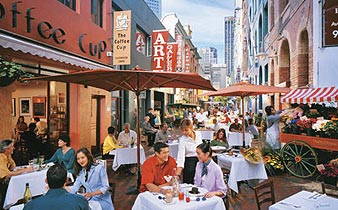Melbourne Typesetting Service for Chinese

If you have an InDesign file that requires translation from English to Chinese or from Chinese to English, we can translate and typeset the translation for you within the InDesign files. Besides InDesign files, we accept Illustrator, Photoshop, Powerpoint or any other popular file format.
For larger files, you may use file-sending services such as yousendit.com or wetransfer.com.
Choose our Chinese Typesetters
- Typesetting of Chinese text by experienced Chinese typesetters
- Huge range of foreign language software and fonts by our Chinese typesetters
- Output to your desired format
Use this form to attach your files and send to us for a free quote.
Chinese Translation and Typesetting
Where a program cannot directly take the fonts of a particular language, typesetting is normally completed in Illustrator and placed back in the original design file as curved EPS files. We have considerable experience in larger multi-language typesetting projects where a consistent design and feel must be produced across several languages. This involves the coordination of Asian and European font styles, point sizes, leading, etc.
We provide professinal brochure translation and typesetting services no matter where you are based, contact us for a free quote.
More About The Chinese Language
The Chinese language (汉语/漢語 Hànyǔ; 华语/華語 Huáyǔ; 中文 Zhōngwén) forms one of the branches of Sino-Tibetan family of languages. About one-fifth of the world's population, or over one billion people, speaks some variety of Chinese as their native language. In common English usage, Chinese is considered a language and its varieties dialects, a classification that agrees with Chinese speakers' self-perception.
Chinese itself has a term for its unified writing system, Zhongwen (中文), while the closest equivalent used to describe its spoken variants would be Hanyu (汉语/漢語, "spoken language[s] of the Han Chinese")—this term could be translated to either "language" or "languages" since Chinese possesses no grammatical numbers.
Chinese Typesetter in Melbourne

Melbourne is the capital and most populous city in the state of Victoria, and the second most populous city in Australia. The Melbourne City Centre is the hub of the greater metropolitan area and the Census statistical division—of which "Melbourne" is the common name. As of June 2010, the greater geographical area had an approximate population of four million. Inhabitants of Melbourne are called Melburnians or Melbournians.
The metropolis is located on the large natural bay known as Port Phillip, with the city centre positioned at the estuary of the Yarra River (at the northernmost point of the bay). The metropolitan area then extends south from the city centre, along the eastern and western shorelines of Port Phillip, and expands into the hinterland. The city centre is situated in the municipality known as the City of Melbourne, and the metropolitan area consists of a further 30 municipalities.
Melbourne was founded in 1835 (47 years after the European settlement of Australia) by settlers from Launceston in Van Diemen's Land. It was named by governor Richard Bourke in 1837, in honour of the British Prime Minister of the day, William Lamb—the 2nd Viscount Melbourne. Melbourne was officially declared a city by Queen Victoria in 1847. In 1851, it became the capital city of the newly created colony of Victoria. During the Victorian gold rush of the 1850s, it was transformed into one of the world's largest and wealthiest cities. After the federation of Australia in 1901, it then served as the interim seat of government of the newly created nation of Australia until 1927.
Often referred to as the "cultural capital of Australia", Melbourne is the birthplace of cultural institutions such as Australian film (as well as the world's first feature film), Australian television, Australian rules football, the Australian impressionist art movement (known as the Heidelberg School) and Australian dance styles such as New Vogue and the Melbourne Shuffle. It is also a major centre for contemporary and traditional Australian music.1

